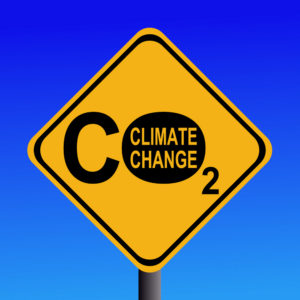

Keeping your seat belt buckled for the duration of Transatlantic flights increasingly looks like a good idea, according to a study of weather systems.

The research by meteorologists at the University of Reading in England, published this week in the journal Nature, shows climate change is creating more turbulent air for planes because changes in wind speed at different altitudes are becoming more extreme.
The scientists found that so-called vertical shear has increased 15% since 1979 in the North Atlantic jet stream, a system that forms a sort of highway in the sky for flights between Europe and North America.
“Wind shear in the jet stream at aircraft cruising altitudes has been increasing since satellite observations began,” said Paul Williams, the professor who led the study. “And we know that clear-air turbulence is created by wind shear. So the link is logical and obvious.”
Clear-air turbulence presents a particular threat to aircraft since it’s not associated with visible weather patterns like tropical thunderstorms and can come as a complete surprise to pilots. An increase in the phenomenon would mean bumpier flights and, potentially, a jump in the number of injuries suffered by people not wearing their seat belts.
Air Canada Injuries
Planes in the grip of such turbulence can drop 100 feet in a second, with severe consequences. At least 37 people were injured on an Air Canada flight last month when a Boeing Co. 777 carrying 284 passengers and crew encountered a pocket of uneven air after departing Vancouver for Sydney.
Thirty people were taken to hospital after the plane diverted to Honolulu, nine with severe injuries, the British Broadcasting Corp. reported.
Williams has calculated previously that severe turbulence over the North Atlantic, the world’s premium long-haul air corridor, will show a 149% increase by the middle of the century. He says a focus on actual wind speeds in the jet stream — which haven’t changed much in 40 years — has given a false sense of security, with the wind shear data telling a different story.
Jet streams are winds driven by the difference in air temperature between the equator and the poles, and Williams said his conclusions apply equally to the southern hemisphere.
Strapped In
In the upper atmosphere, climate change is amplifying that difference, so that the upper-level jet stream flows faster, according to Williams. But at lower levels, global warming in the Arctic is weakening the temperature gradient and hence also the jet stream. The net result is “a closely balanced tug-of-war between two competing effects at different altitudes,” he said in the interview.
A greater incidence of clear-air turbulence isn’t about to send planes crashing from the sky or lead to a significant increase in fatalities, but passengers could find that they have less freedom to move about the cabin, and arrive at their destination late more often.
“Based on our current understanding, there is no reason to expect the future increase in clear-air turbulence to lead to crashes,” Williams said. “The most obvious impact is that passengers will be spending more time with their seat belts on, plus possibly experiencing delays from re-routing.”